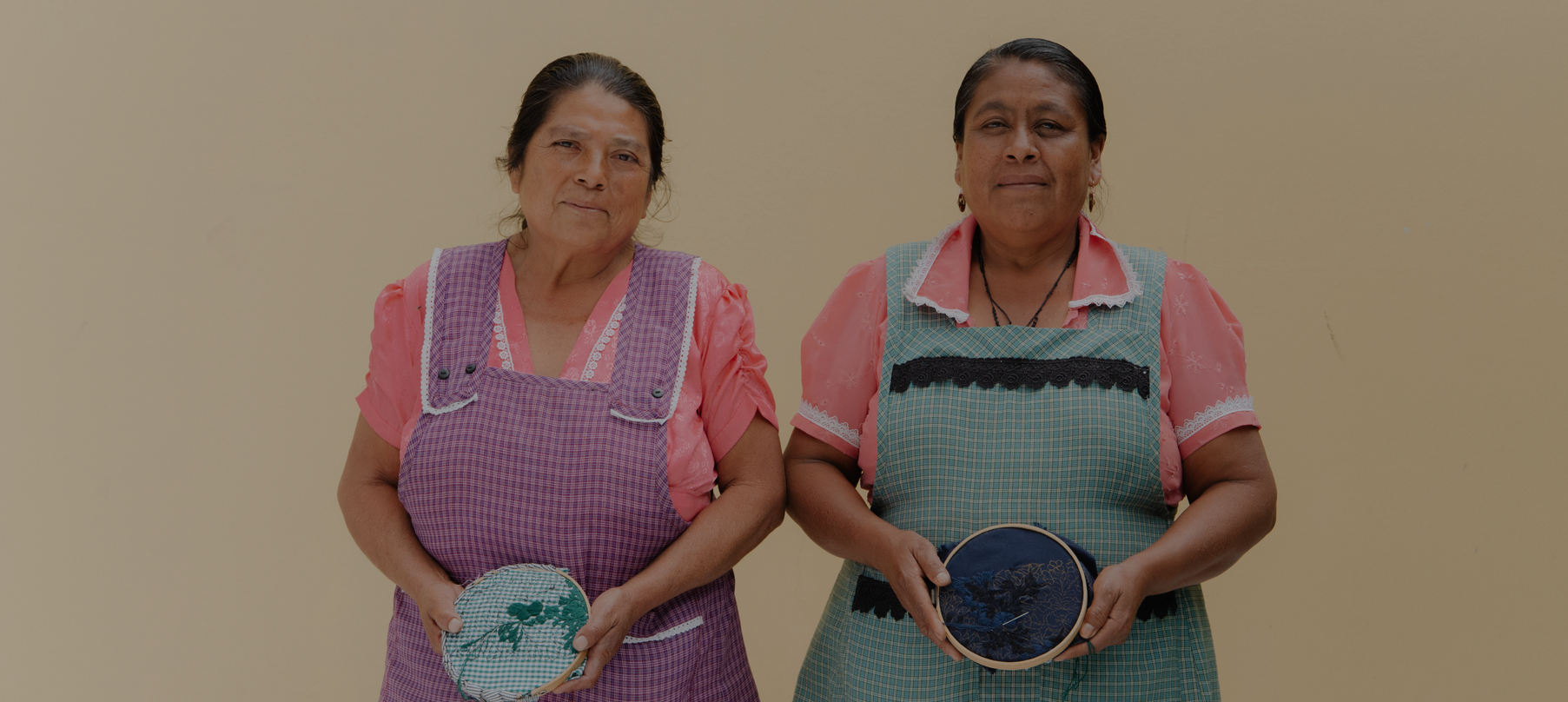

The Process | Flores
by Cristina LynchI started working with artisans in San Antonino Castillo Velasco in 2012. I went with my mother and drove to the communities to meet with the women who would potentially be interested in working with Mi Golondrina. I was so drawn to this embroidery style because I had seen an award-winning dress by Faustina Sumano Garcia in a beautiful book my mom had in her home. It was feminine and whimsical and looked like a painting to me.
I was fortunate to grow up surrounded by these books and pieces my mother collected. She had been giving me an education on artisanry and I didn’t know how much it would change my life. When we met with Faustina, we were so taken by the detail of her pieces. Each flower radiated with the colors of Mexico: fuschias, bold yellow and shades of green as if you were in a dream garden. I am honored to own a few of her pieces as you normally have to buy them before they are made, and they take at least a year to create.
It’s important for me to tell you this back story so that you understand that this embroidery style not only represents a community but is also an art. Each woman who works on each of these dresses takes pride in her work. The San Antonino Castillo Velasco embroidery has existed for over 200 years and represents their community. Grandmothers and their granddaughters have mastered this technique not only because it brings additional income to their household but because it represents a joyous part of their culture and identity.
After meeting with many women, I was so taken by one. Roberta Angeles Ojeda comes from a family of entrepreneurs and was the most willing and excited to work together. Being only 23 years old, I was elated that Roberta trusted me to grow something and collaborate.
Each piece begins at her workshop in Oaxaca, Mexico. After spending lots of time working together on color choices and styles, we are ready to begin production. We work with luxury fabrics locally and import from places like France and Portugal. It is important to us that the quality of our fabrics carry the weight of the beautiful artisanry. When we first started working with artisans a lot of the fabrics used were poly-cotton and did not last the way their embroidery did. This was something we were excited to change and the women we work with were thrilled to embroider on higher quality.
The Beginning

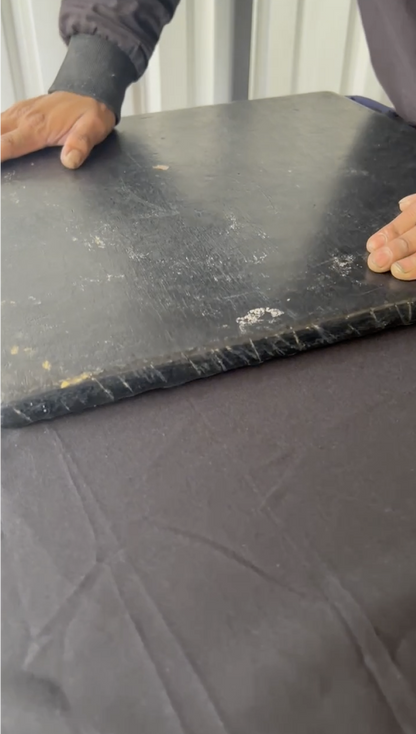
Once the fabrics arrive to the workshop they are ready to be prepped for the women who embroider. The fabric is cut and placed onto a table where it will be stamped with a large metal stamp.
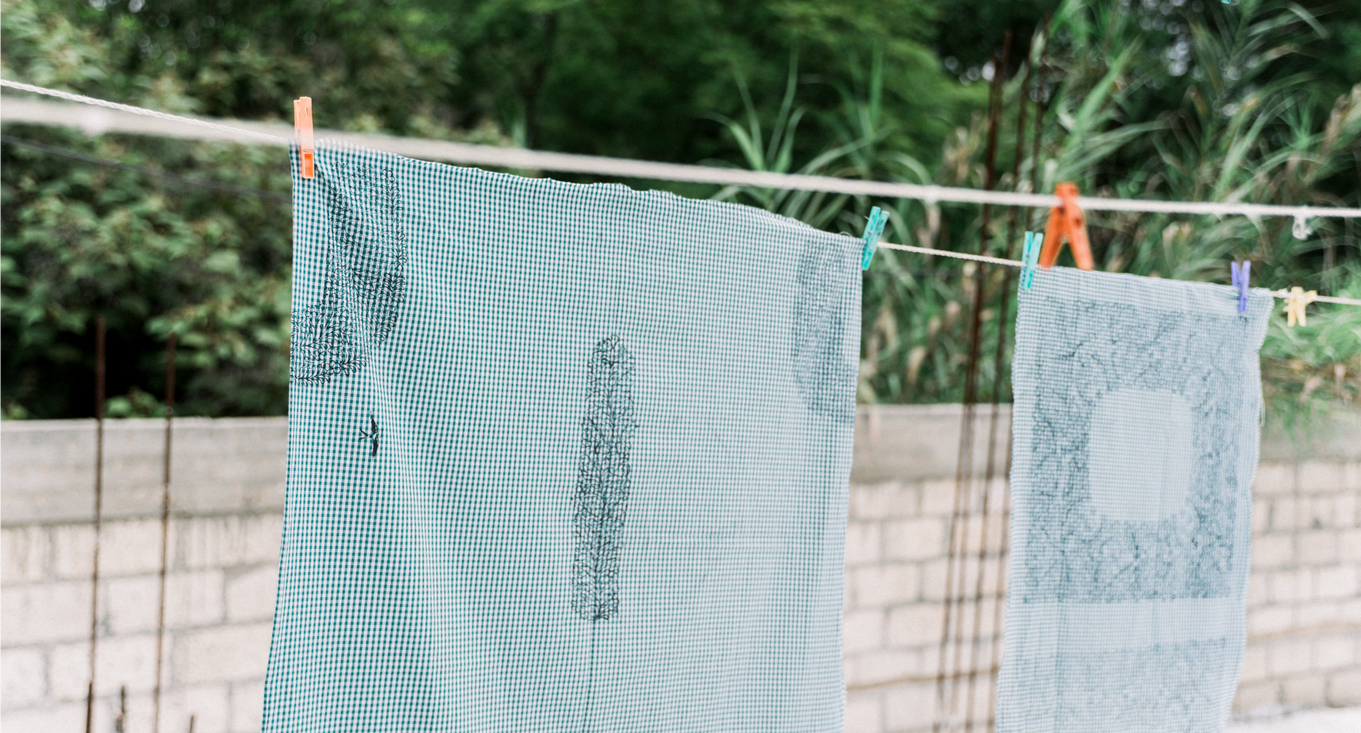
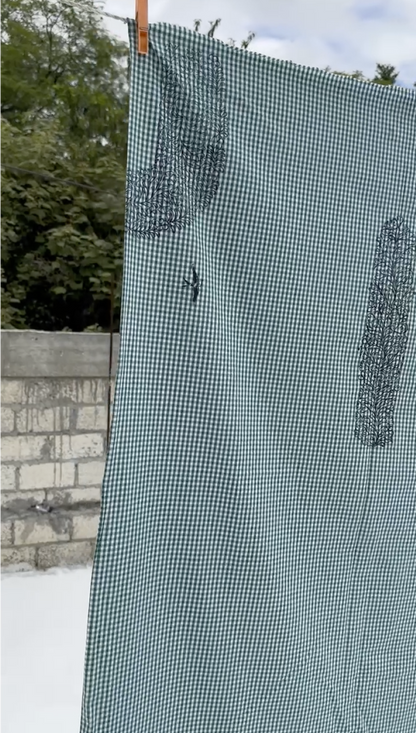
The metal stamps are rolled with white, gold or black ink depending on the color of the fabric, stamped onto the fabric, and then hung in the sun to dry. This is a very important part of the process and there are normally only two people on the team who have mastered it. I have always loved the metal stamps because they are works of art. They are made in Mexico using a hand drawn design from an artisan. A lot of these stamps have intricacies per family so that you know where they are coming from.
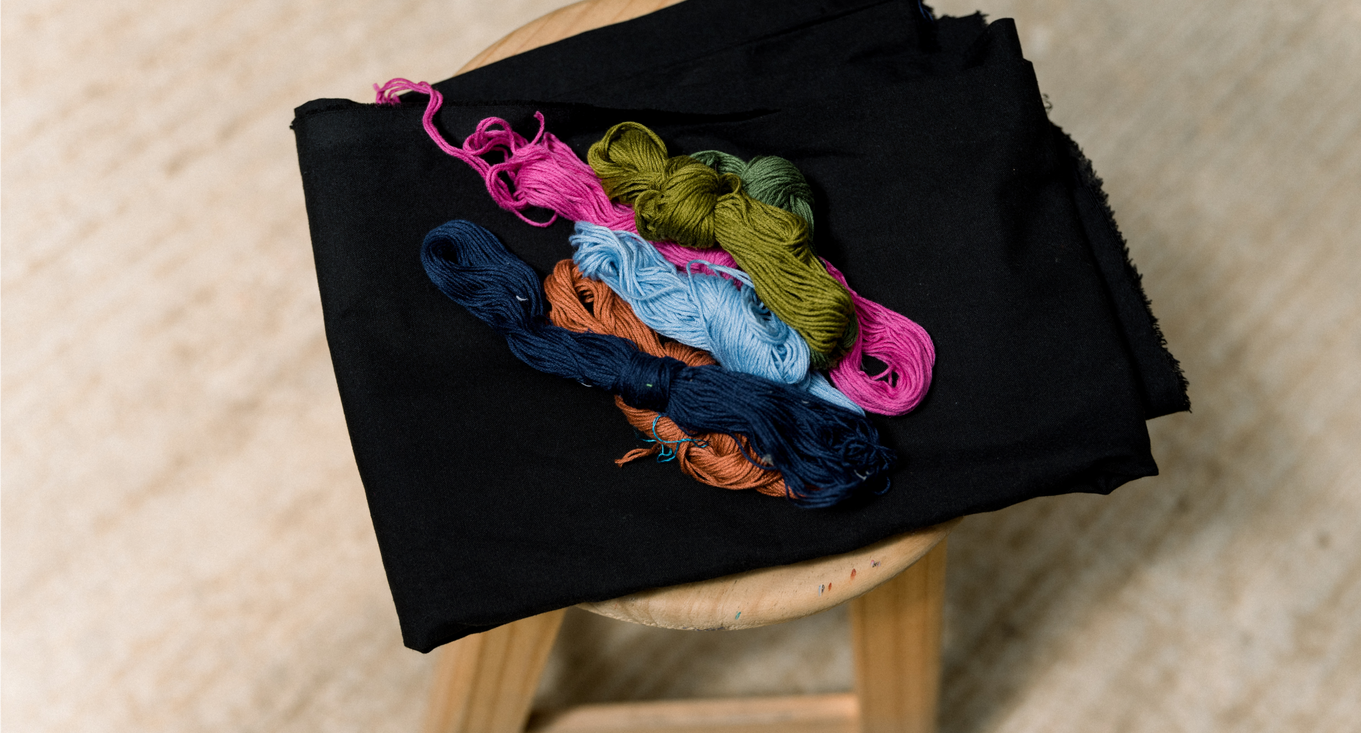
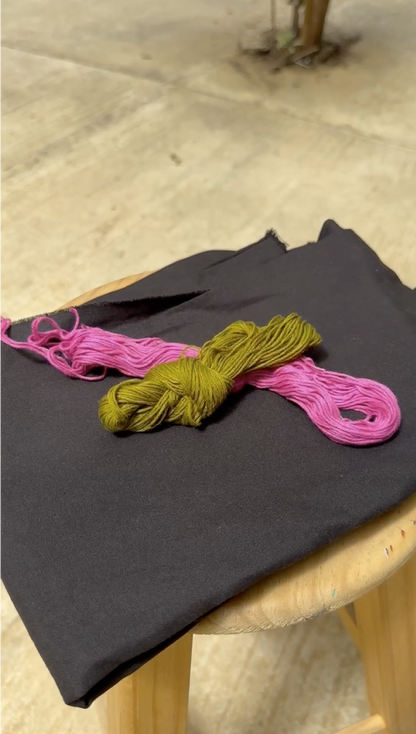
Once the ink on the fabric is dry, it is ready to be prepped as a kit for the first community of women who embroider. The neck and body of the dress are rolled together and the amount of thread that is needed for that dress is placed in the middle. These kits arethen driven to women who have mastered this embroidery technique.
The Embroidery
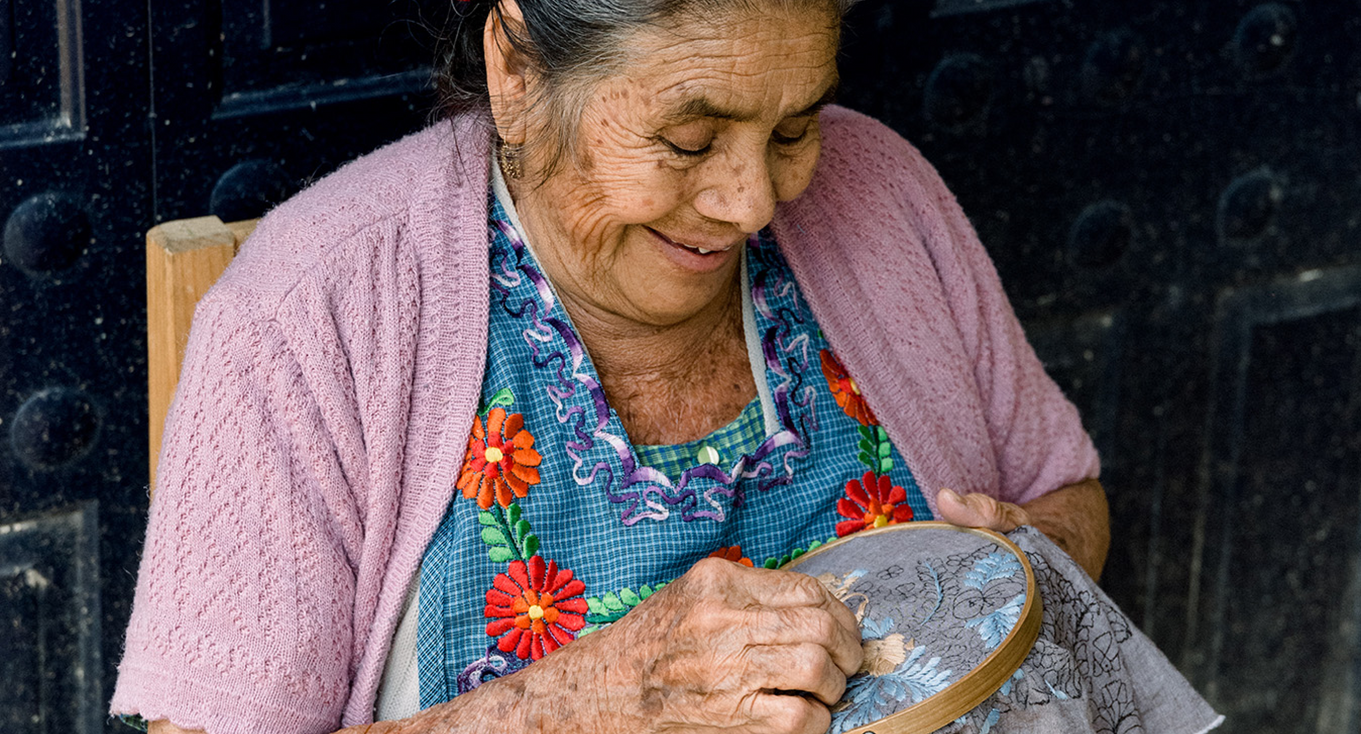
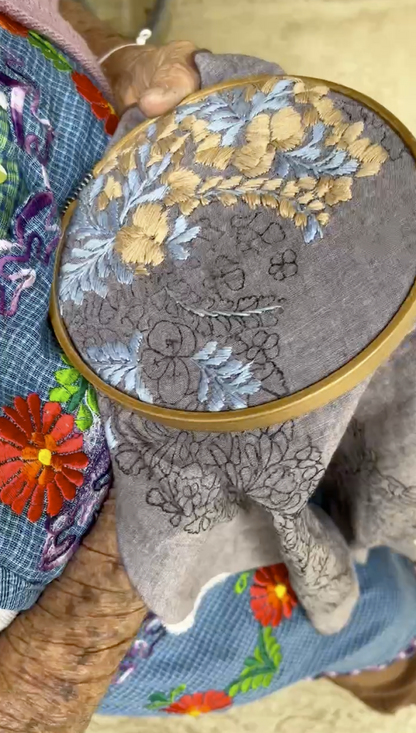
The embroidery portion of the dress can take up to three weeks to complete. They all embroider in their homes, on their own time, as they have other important responsibilities like taking care of their children and supporting their husbands work. The embroidery is a great way for women to feel empowered while they earn additional income and support their families.
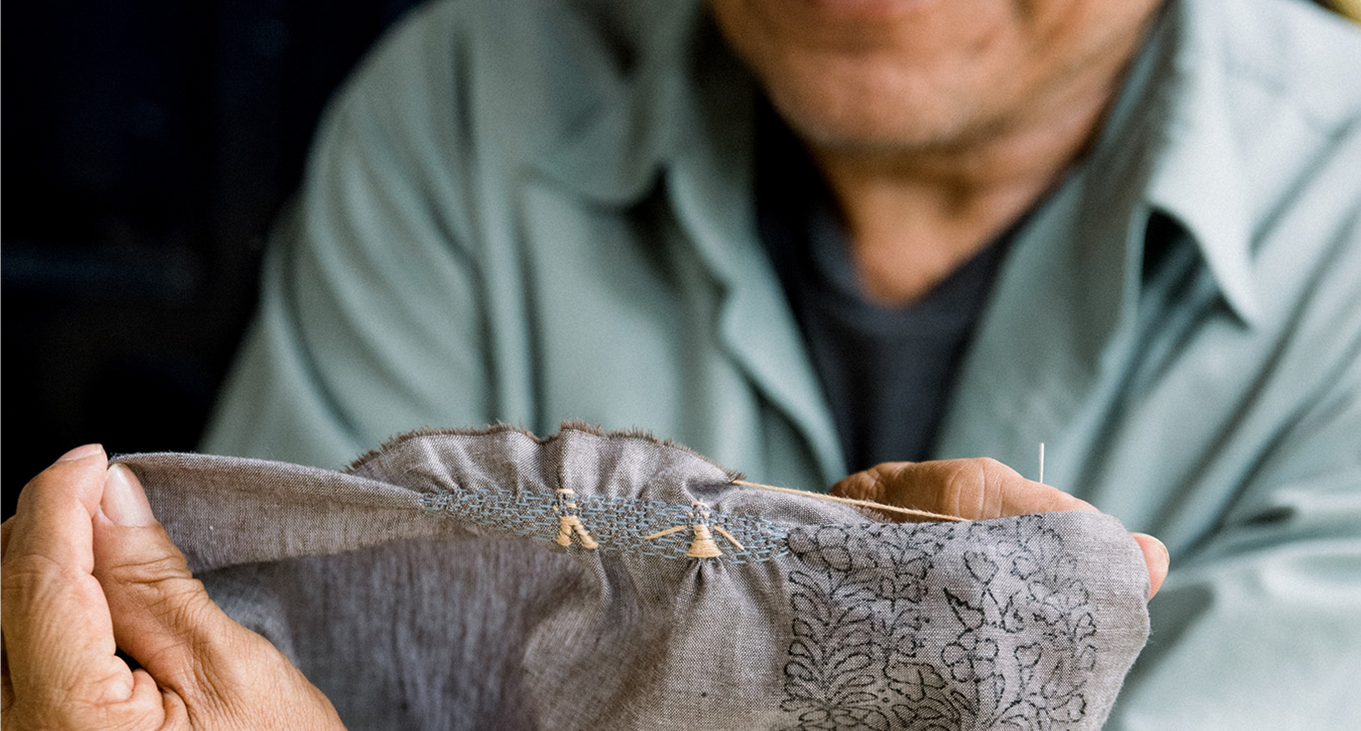
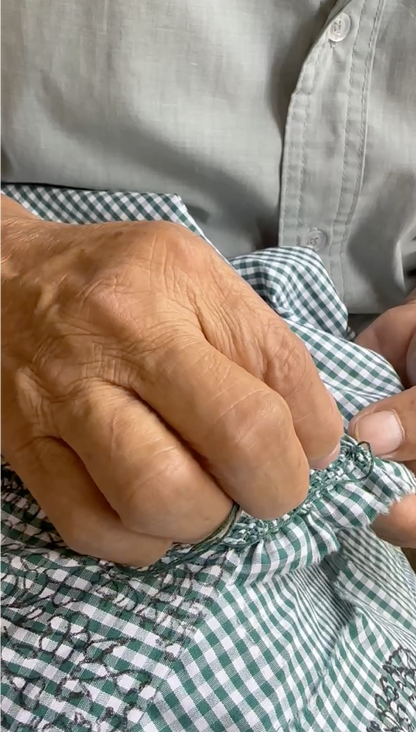
Once the embroidery is completed, someone from the workshop will drive to pick up the embroidered pieces and distribute to two more communities. The neck of the dress is always finished with traditional hand crochet and the body of the dress will have atraditional hand-smocking detail added that is also known as “hazme si puedes” or “make me if you can”.

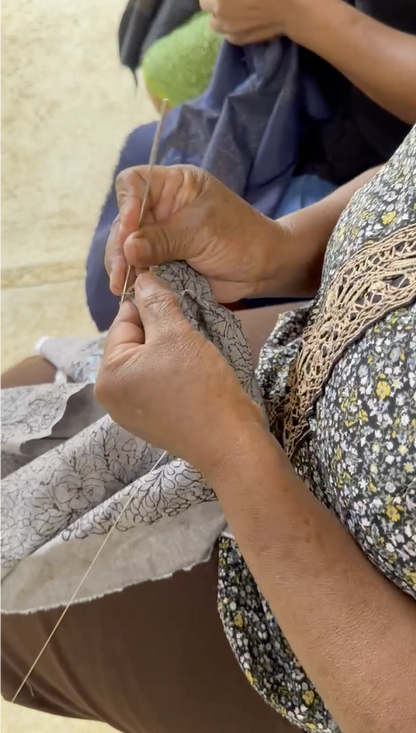
We work with six women to have the hand crochet completed and the smocking detail is completed by six families. One of my favorite things about the smocking detail is that if you look closely you can see that it’s actually men and women woven together acrossthe chest of the dress. It is such a beautiful representation of community.
The Final Steps
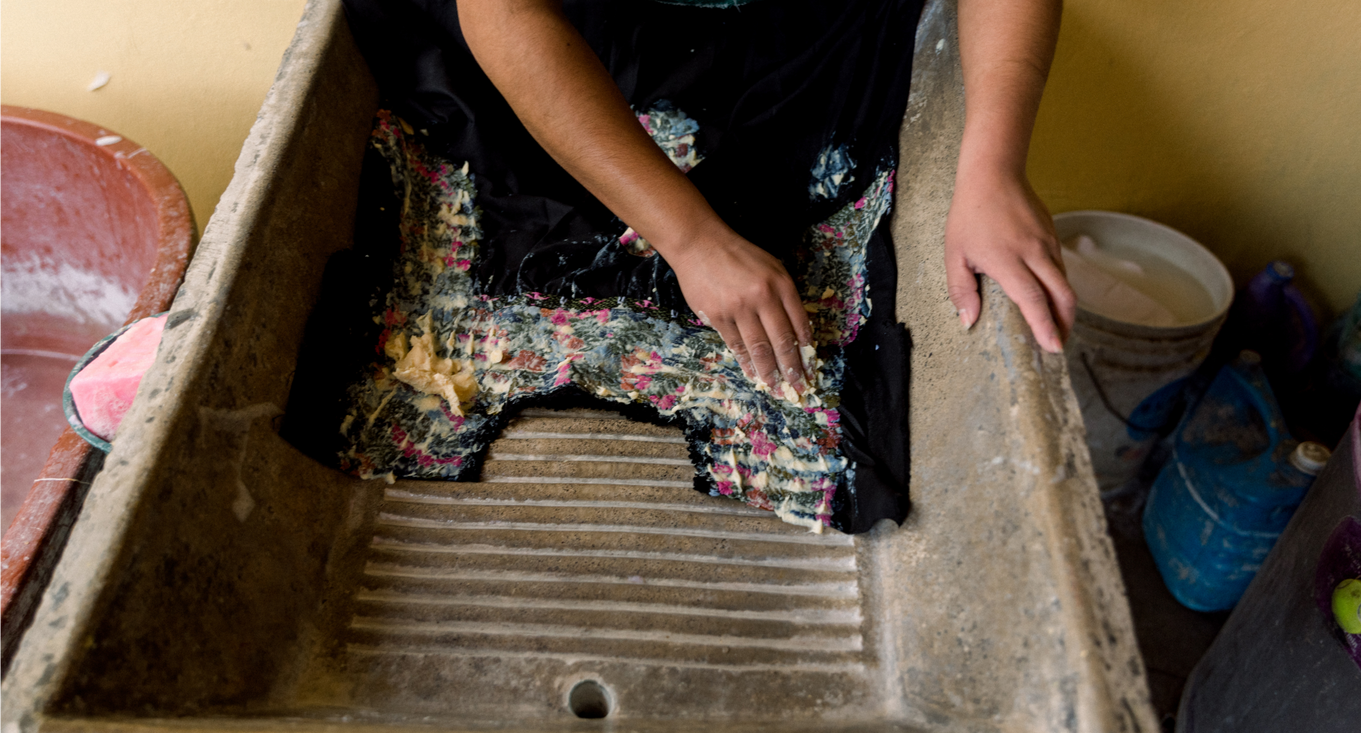
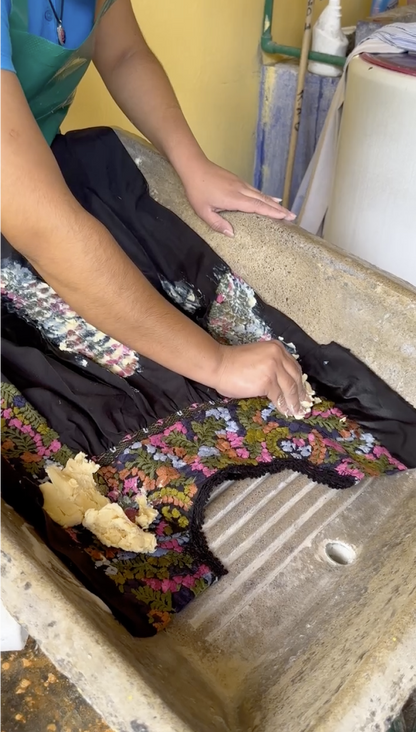
After the neck and the body of the dress are gathered at the workshop, it is now time to handwash the pieces. Each dress has been through many amazing women at this point and dust and daily life needs to be washed from the cotton. Some of the dresses arehand washed three times before being hung to dry and they sit in a slow washer of soap and water to help the handwashing process.
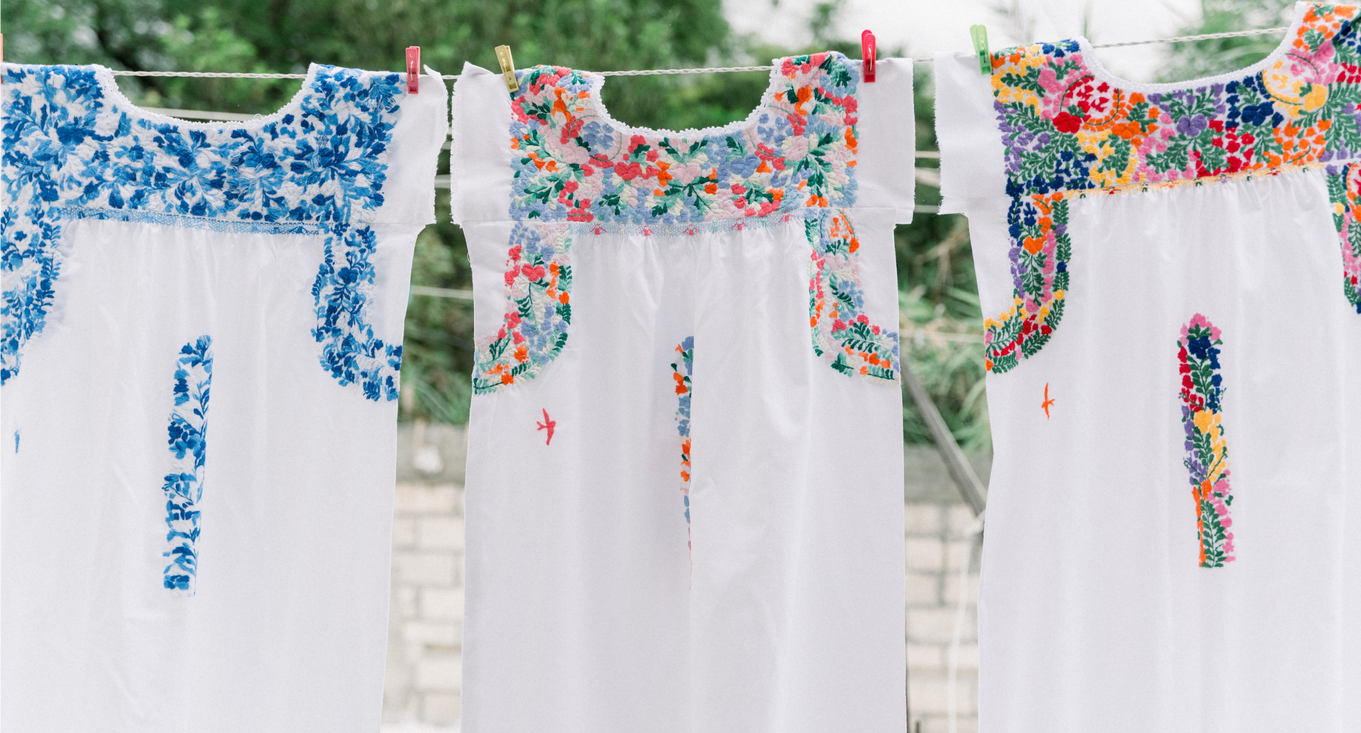
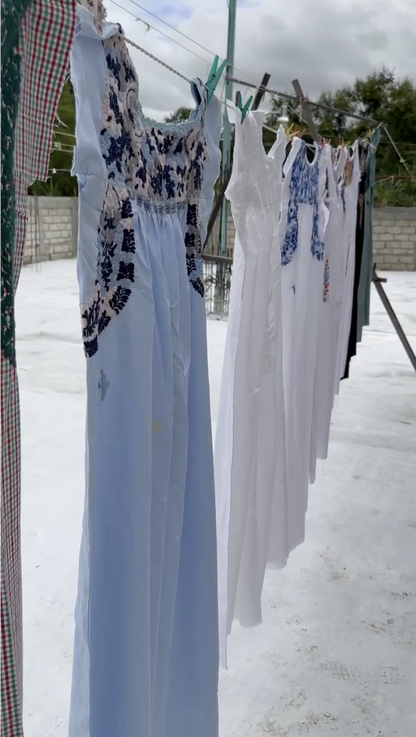
Once the pieces are washed, they hang in the sun to dry until they are ready to be pressed with their traditional pleats. At this stage, the dress has been in production over three weeks and visited three communities.
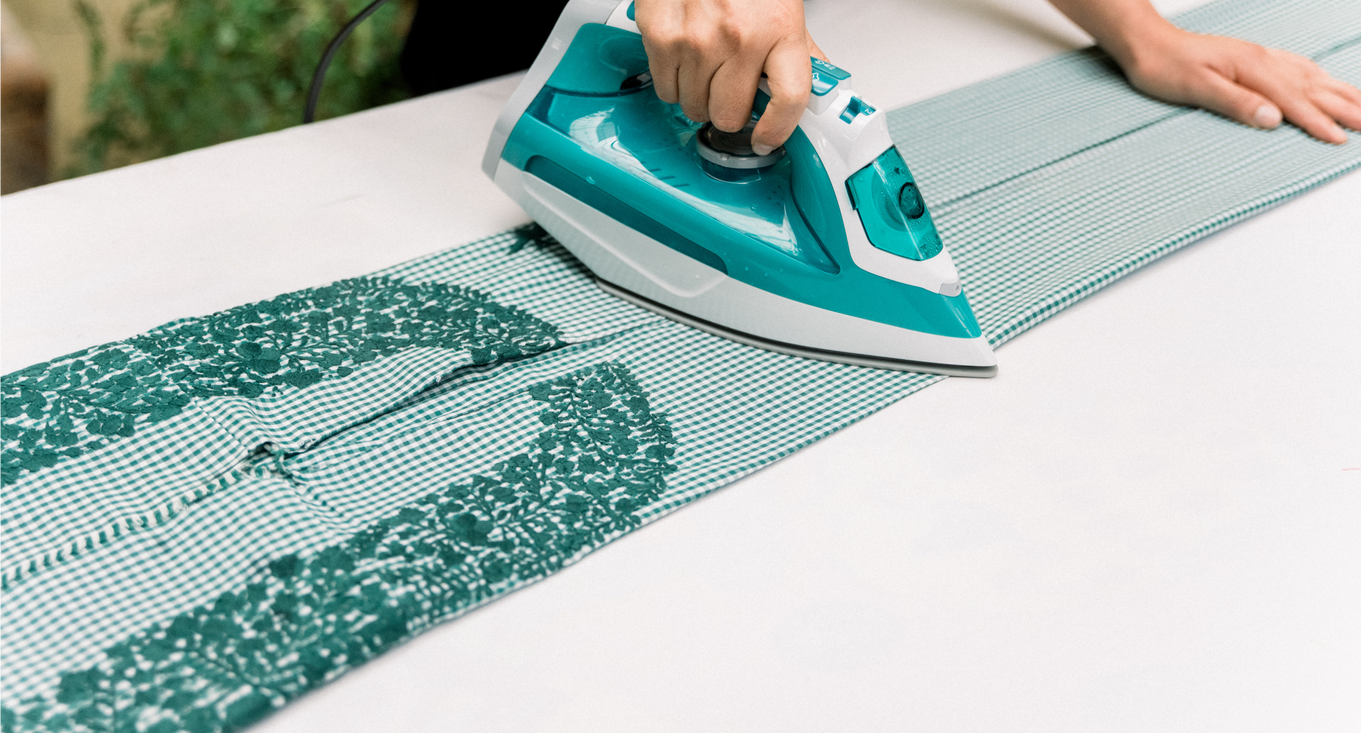
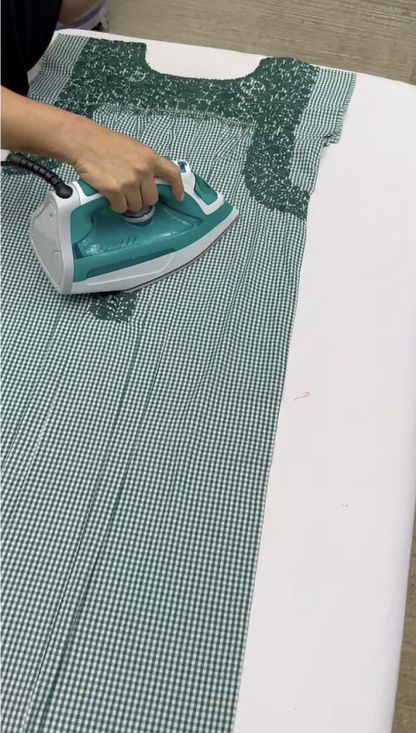
Once the pieces are pressed, they are folded with pride and sent to our headquarters in Dallas where our Quality Control Team goes through one more round of inspections. The pieces will either be sewn by our talented team of seamstresses in Mexico orDallas into their intended size and silhouette and then pressed again with traditional pleats.